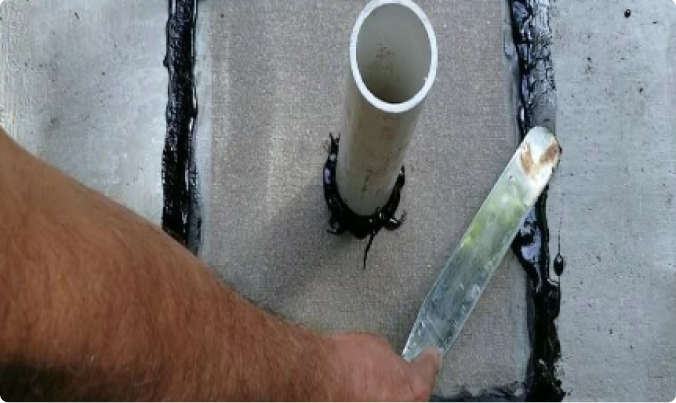Term's 3 Barriers
Build in TERM Water|Termite non-chemical barriers to protect most of the structure
How do Formosans get in?
To begin with, termites are small, voracious, and there are millions:

SMALL: Formosans and most U.S. species are among the world’s smallest insects. To exclude them, a screen with 0.02” is required. They can enter through gaps which you might not notice.

VORACIOUS: Termites can chew their way through some surprising materials. Most woods, cellulose, plaster, wallboard, many plastics, most sealants, thin copper or lead, and fabrics.

MILLIONS: Formosan colonies can have millions, and multiple colonies may exist around a structure. Source: University of Florida

Where are termites getting in?
Concrete slabs have joints, which shrink, expand, or move enough to create entry points.
Concrete slabs will develop cracks. We just don’t know where and when.
Gaps can be created around slab penetrations, both at construction and with expansion and contraction of metal pipe. Additionally, the plastic sleeves commonly used around penetrations for corrosion protection create entry tunnels.
Bath traps and mop sinks are left open to drain overflow water, but also function as entry points for termites and larger pests.
Foundation joints and cracks offer entry possibilities.
At exposed concrete perimeters, termite mud tunnels are built. Tunnels provide protection from predators while termites travel to the structure seeking weep holes and other gaps, or when returning to the soil for moisture.
Gaps at isolation joints are vulnerable.
Many sheathing materials are termite resistant, but seams and joints at the edges can have gaps.
Although the risk from foraging termites on the exterior decreases with the distance above ground, the risk from swarming termites is always there. Swarming termite risk is seasonal and weather related, but as seen in this national Weather Service satellite image swarms of Formosans are intense. Windows, soffits, and roof fascia are vulnerable

TERM Overview
The graphic above shows an overview of the TERM Barriers (Membranes, sealants, stone particles, and screen) and the parts of structures where they protect.
Below are most TERM Barrier components, the points they protect, and a photograph.

ENTRY POINT: Slab joints and slab cracks
BARRIER: TERM Underslab Barrier
TERM Underslab, in addition to blocking water and termites, elongates to accommodate joint and crack movement, and can self-heal small punctures.

ENTRY POINT: Slab penetrations
BARRIER: TERM Termite Sealant
Termite entry is made through plastic sleeves which are used to avoid corrosion on metal pipes. Additionally, the expansion/contraction of the penetration caused by temperature changes can open entry points.

ENTRY POINT: Bath Traps/Mop sinks
BARRIER: TERM All Pest Bath Trap Barrier
Termites are stopped by this stainless-steel screen. So is every other pest, large or small.

ENTRY POINT: Foundation joints. Foundation cracks
BARRIER: TERM Foundation Barrier
TERM Foundation Barrier blocks both water and termites, and is highly puncture resistant, which minimizes construction damage. Foundation Barrier also stretches to accommodate movement of cracks and joints.

ENTRY POINT: Sheathing base
BARRIER: TERM Sill Barrier
In addition to acting as a termite barrier, TERM Sill Barrier blocks water and moisture from steel sills, reducing corrosion, and from wood sills which reduces termite attraction, and protects borate treated wood from leaching the mineral.

ENTRY POINT: Sheathing base
BARRIER: TERM Flashing Barrier
TERM Flashing Barrier blocks moisture and termites at the sheathing/footer intersection, which is a frequent termite entry point.

ENTRY POINT: Seams, doors and windows
BARRIER: TERM Flashing Barrier
Most sheathings resist termite penetration, but their seams are vulnerable. Door and window openings have vulnerable gaps needing protection from both water and termites.

ENTRY POINT: Isolation joints
BARRIER: TERM Isolation Joint Barrier
TERM Isolation Joint incorporates both Termite sealant and stainless-steel wire mesh with 0.02” apertures, which blocks termites and other pests.

ENTRY POINT: Exposed concrete perimeter
BARRIER: TERM Particle Barrier
Exposed concrete perimeters are vulnerable to termite entry, which can be seen when “mud tubes” are constructed by termites to protect their travel into or out of the structure. The particle barrier blocks termites below ground level because the 8-16 sieve size particles are too big for termites to move, and too small for them to crawl between.